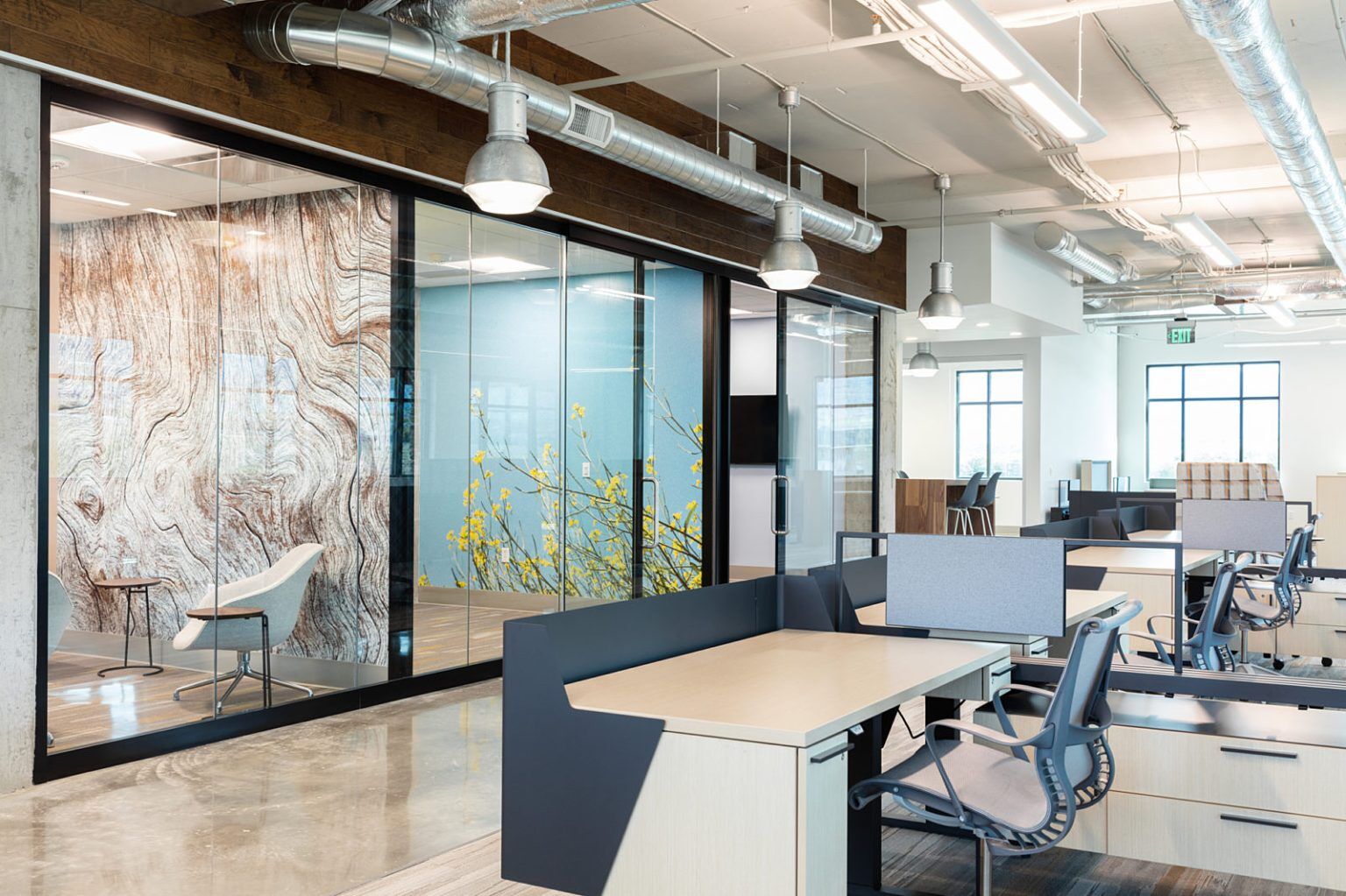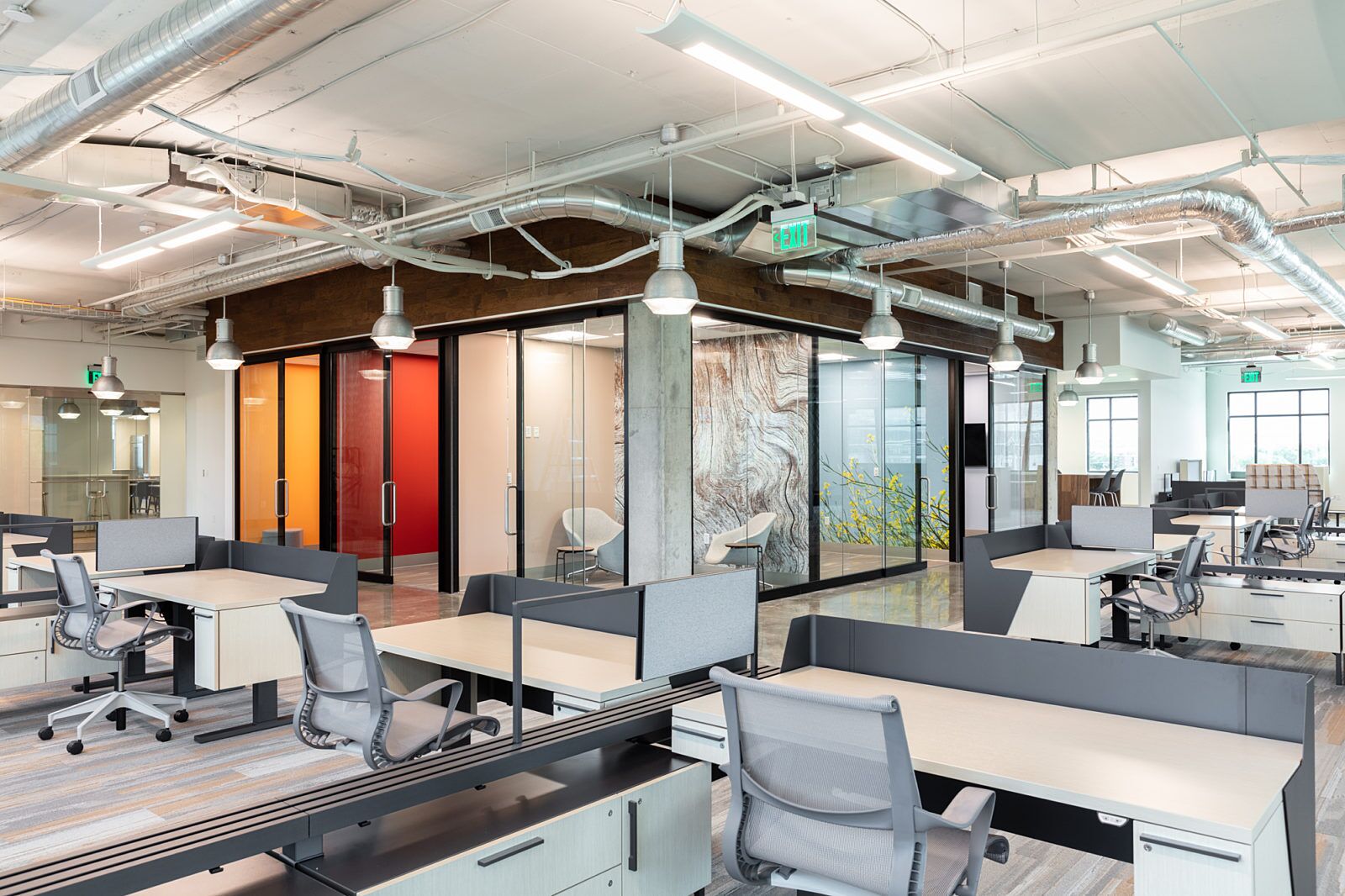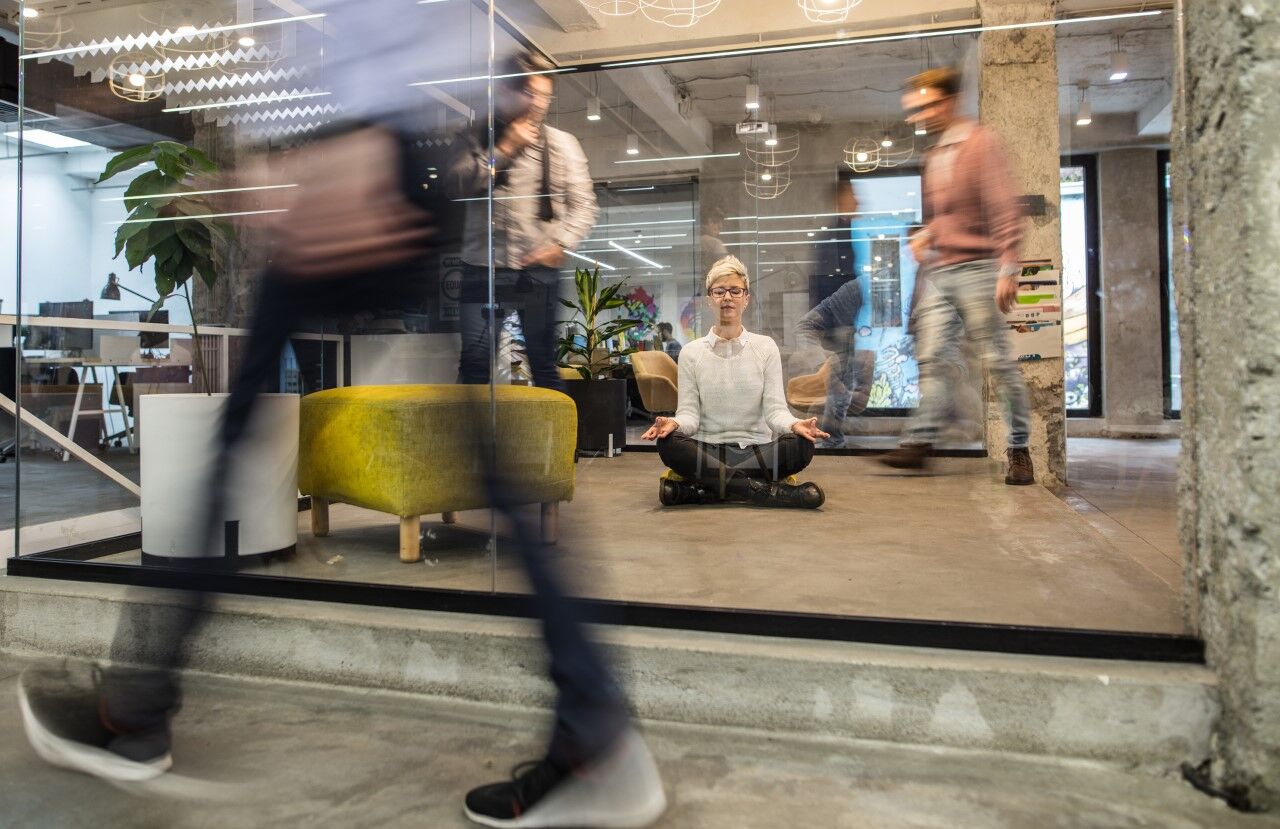Reimagining the “Bullpen” at the Office

Everyone seems to know the slang term “bullpen” at the office – a buzzing place without walls, only cubicles – more generously known as “workstations.” Many workers in the Baby Boomer or Gen X generations started in the bullpen, just out of college, where hard work was recognized and eventually may have led to a quiet sanctuary: the private office.
Bullpens became popular after World War II when many office workers were employed to type documents prior to any mainframe computers becoming standard equipment in the field. By the 1960s, information management was becoming a big business, keeping right up with manufacturing. This work did not require privacy and, thus, the open floor plan was born.
In 1968, Herman Miller’s Research Director, Robert Probst, unveiled Action Office, the world’s first open-plan modular system of panels and attaching components, later to be known as the cubicle. Unknown to most, Bob’s vision (along with Miller’s design director, George Nelson) was to create a system that promoted collaboration, flexibility and adjustability to allow workers to modify their workstations to best support their tasks. The timing was right, as mainframe computers become personal (desktop) computers, the cubical and bullpen was an effective way to optimize office space.
Fast forward more than 50 years, and not much has had a comparable impact to the way work is done, until now. One silver lining of the COVID-19 pandemic is that it has forced corporations and the design community to reimagine what has come of the modern Open Office Bullpen since Probst’s invention. Some believe that the pendulum had swung too far. From Bob’s original vision for Action Office, to seas of sameness with cubicles, and now the most recent trend of “Benching” (think desks in a row with no wall separation), the novel requirement for social distancing will be the biggest impact on space utilization, thereby spurring the most drastic changes in design.
This urgency of redesign was fueled by some staggering research findings. In a case study in South Korea, 43% of workers on a call center floor tested positive from COVID-19 after the Seoul Metropolitan Government was notified of a single positive case there. Research from MIT published in Spring 2020 shows a sneeze can blast potentially infectious droplets as far as 27 feet – well beyond current social distancing guidelines. The priority in a bullpen is no longer efficiently using space, but keeping employees healthy and safe.

Some companies are adapting to this not by changing their layout, but by staggering their work force. For instance, some employees might come in Mondays, Wednesdays and Fridays, and others on Tuesdays and Thursdays. With this model, the bullpen is only at 50% occupancy at any given time, providing the recommended physical distancing. Of course, this is in tandem with increased cleaning protocol, better air filtration, touch-free technology, one-way traffic in hallways and the ubiquitous face mask when not at a desk.
In addition to these fixes and short-term modifications, we are seeing the emergence of other trends, including:
- Accommodating teams has become a challenge, leading to the evolution of “Zoom rooms” where a portion of the team is included virtually, and some physically in the space.
- As companies have a knee-jerk reaction to raise workstation panel heights to protect from coughs and sneezes, collaboration and human interaction decreases.
- Forward-thinking companies are starting to see the office as more of a destination for collaboration and less of a “heads down” privacy space with seas of workstations.
- The “me” space is getting more private with less density, and fewer neighboring colleagues. The “we” space is moving to be virtual, outside, or in physically distanced conference rooms with augmented air filtration.
- Zones within the office floor plate are starting to develop – what in the past might have been a “quiet zone” versus a “chat zone,” there are now additional areas such as a “safe zone” and “social zone” to accommodate different levels of comfort.
50 years after the bullpen was invented, we find ourselves again searching for inspiration from Bob Probst. In a COVID-19 world, workers are craving human-centered design, flexibility and choice. Matter, together with leaders in the space like Herman Miller and Henriksen Butler, will continue to anticipate the needs of our communities and build our projects to suit.
Tom van Betten is vice president of strategic relationships at Matter Real Estate Group, the developer behind UnCommons. Heather Bressler is the principal and market president for Las Vegas at Henriksen Butler.


